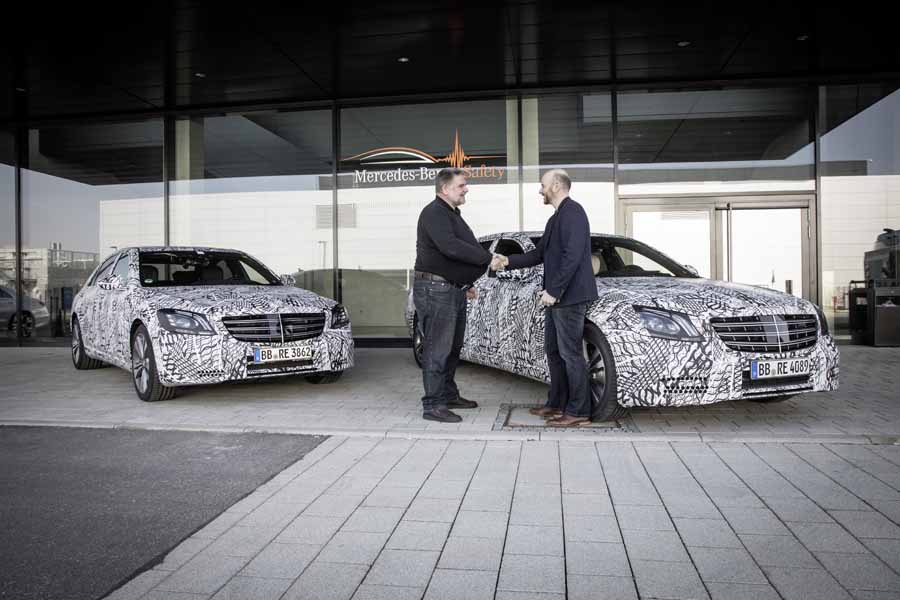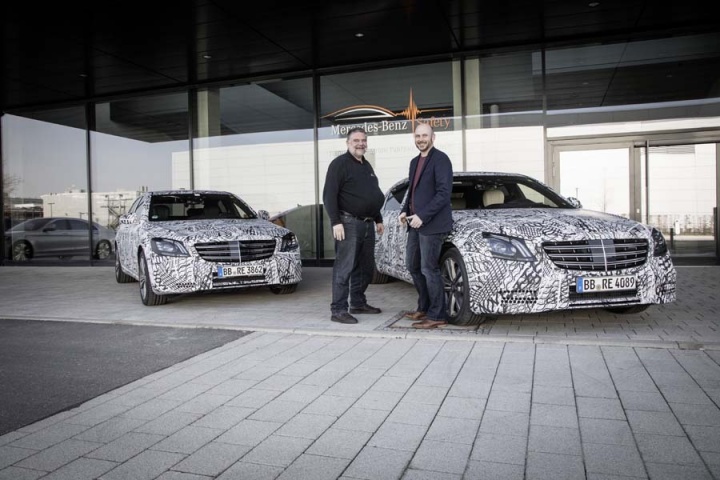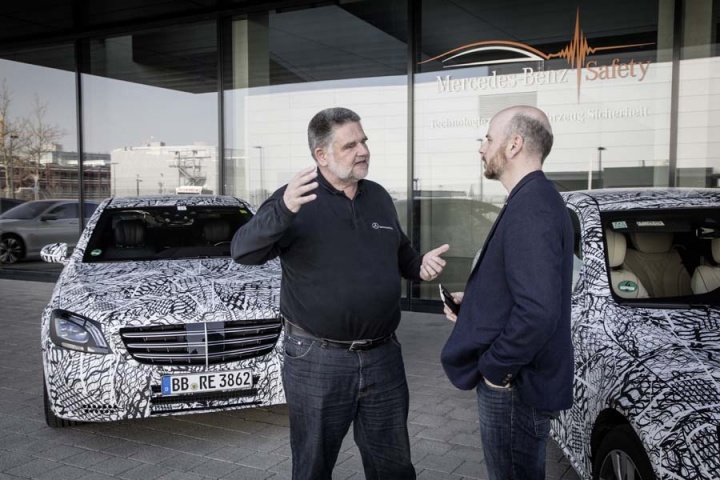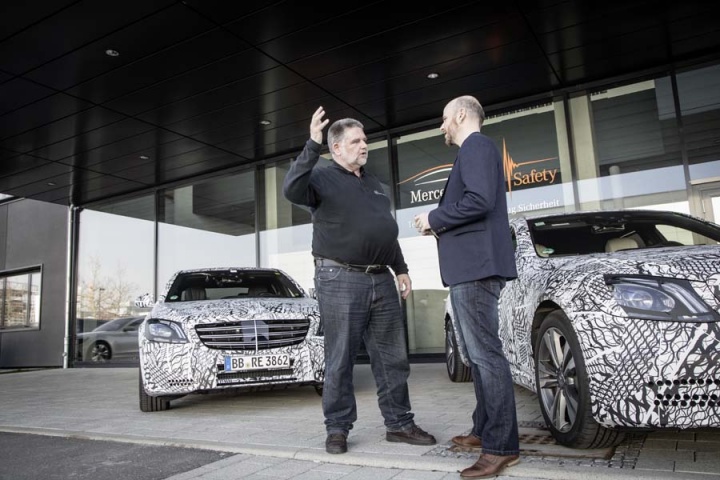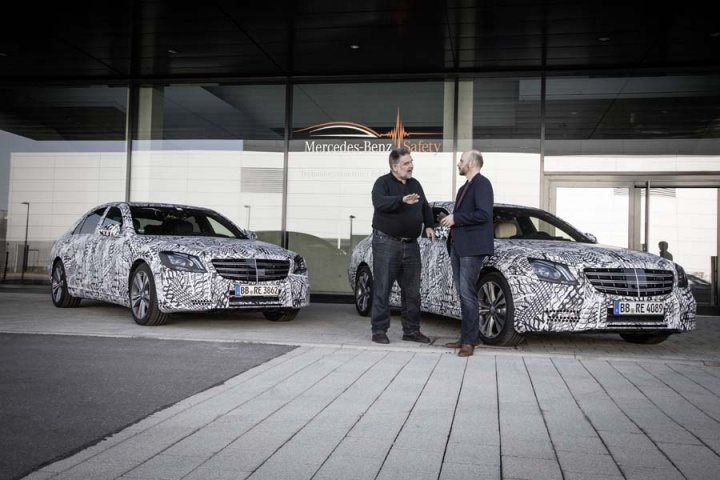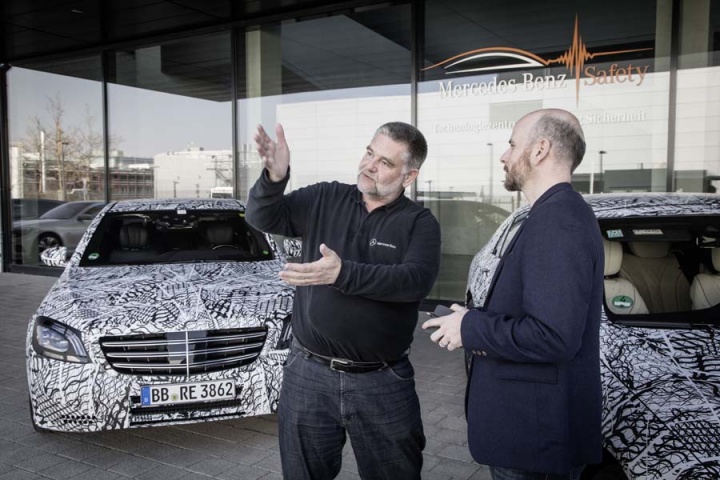ESP is the biggest safety advance in car technology since the seatbelt; we met the German engineer who dreamt up the idea.
Frank-Werner Mohn is a German engineer. Nothing unusual in that in the automotive industry. Indeed, in my line of work I probably meet a German engineer every other week. I love that Germany values its engineers, holding them in the same high regard as doctors. They’re rightly seen as the drivers of the country’s economy, and widely regarded as among the very best in the world.
Mohn is a little bit different. And not because he’s unusually, infectiously jolly - German engineers are usually a touch more serious, as the stereotype suggests. His excitement in demonstrating the newest safety technology for the next Mercedes-Benz S-Class is infectious, laughing and joking as we hurtle the big luxury saloon towards a simulated pedestrian or parked car. It’s during one of these exercises, which are increasingly the norm for demonstrating the breadth of capabilities of active safety and driving assistance systems, that the Mercedes-Benz PR person mentions Mohn is one of the fathers of ESP (Electronic Stability Program - as known as ESC for Electronic Stability Control, or simple stability control).
That little snippet has me stopping the conversation as quickly as an Electronic Brake Assist, ABS-triggering emergency stop in that new S-Class. Mohn, then, is a guardian angel, a man whose idea has saved countless lives; studies conservatively suggest that, in Europe alone, ESP has prevented 260,000 accidents and saved some 8,500 lives. ESP, then, is among the most important safety innovations in cars alongside the seatbelt. The US National Highways Traffic Safety Administration calculates that ESP prevents 34 per cent of all accidents, and 70 per cent of possible vehicle rollovers. Mohn is pretty pragmatic about it all (he’s a German engineer after all), but I’ve never, ever felt so compelled to shake someone by the hand and thank them.
The idea came to Mohn as a young engineer for Mercedes-Benz. Somewhat embarrassingly, he admits, because of a crash. Driving a 124-Series E-Class in Sweden, he lost control, putting it into a snow ditch. That he did so in front of his test team colleagues only made it worse, and Mohn spent the next few sleepless nights pondering how he could have avoided the accident. His solution was stabilising the car via ‘forced braking’, an idea he had to convince his then boss to allow him to develop further. Thankfully, he did, and Mohn developed it with another engineer Thomas Wohland.
Given ABS (Anti Lock Braking) was still in its infancy, Mohn’s idea was fairly radical, and it required more than the then relatively simple speed sensors ABS used. With a bit of lateral thinking they used the gyroscopic sensor from a remote control helicopter, fitting it to a vehicle in 1990. It worked well enough to take to component manufacturer Bosch, where a team of over 40 Bosch and Mercedes-Benz engineers, including Mohn himself and Bosch’s Anton van Zanten, developed it into a production-ready system.
The first series production car with ESP as standard was the 1995 Mercedes-Benz S600, and it is now standard fitment on all European cars, mandated by law since 2014. Bosch has manufactured more than 150 million ESP systems and its ability to prevent, rather than mitigate crash related injuries like airbags, crumple-zones and seatbelts, is why it’s so significant.
The new Mercedes S-Class that we’re here to experience takes safety to another level; the assistance systems on board were unimaginable back when Mohn had that little Swedish accident. Interestingly, it’d be another accident in Sweden with the A-Class that would accelerate the introduction of ESP across more vehicles, but Mohn is more animated about the new technology he’s helping develop today rather than talking about the journey to it.
With near autonomous driving and anticipatory systems, pedestrian detection and more besides, all these systems work in conjunction with ESP. Mohn’s excitement at what the future holds is only tempered slightly by the fact that one day he’ll not be around to see it all. That many millions will be is testament to Mohn’s idea. I’ll admit to being a little bit star-struck and humbled in meeting him - an engineering guardian angel, he has contributed to saving countless lives every minute of every day for over 30 years.

